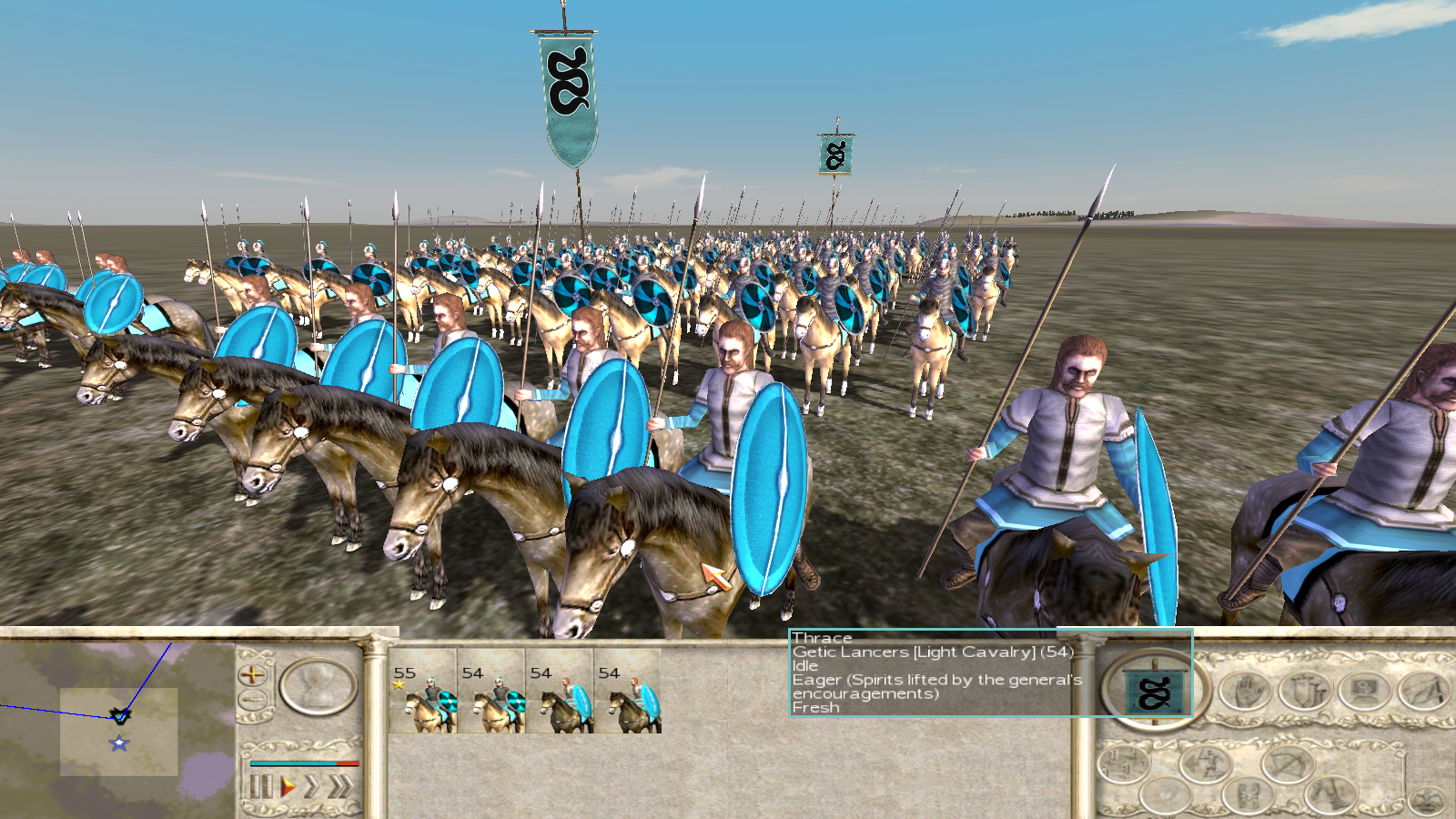WARNING: Spoilers ahead for the Pathfinder 2e Beginner's Box adventure.
This is a little AAR of the Pathfinder game I played in (as a player for once!) this weekend. More to come as I write my scruffy notes up into something that feels like the diary Thurazur might write in the evening.
There's a second session planned in a few weeks, so hopefully this tale ends up with quite a few entries.
Otari
It was around lunchtime that we came upon the seaside town of Otari. The road wound down through the vineyards into town as Sister Cynthia and I arrived, looking for adventure and interesting discoveries. At this point I've been travelling with the cleric for a few months; she's an interesting character, but a good person to have at your back in a pinch.
Presently we found ourselves at the door of the Rowdy Rockfish, an entertaining looking tavern. Hungry and thirsty from the road, we decided to step inside. Pushing the door open, the Rowdy Rockfish didn't live up to its name. Entirely lacking in rockfishes, and not at all rowdy, the Rockfish seemed to be a relatively upmarket establishment. The bartender stood behind the bar polishing a wine glass as the locals sat around the tables enjoying their lunch and chattering to each other. There were only two notable things in the whole place; a shady-looking character lurking by the far corner of the bar, and a table near the door at which a huge orc and diminutive gnome were just sitting down.
I decided to engage with these two points of interest in reverse order, and sat down at the table whilst Cyn went to the bar to make the first and perhaps most important discovery about Otari - what wine was available. I introduced myself to the orc, named Grugnog Thunderpants (I think I heard that right), and the gnome who just goes by Clive. Apparently Grugnog owes something of a life debt to Clive after he saved him from an unseen attacker, though Grug seems not entirely pleased with this situation.
As soon as I got talking to these two, an elf walked in and apparently had the exact same thought process as myself. She sat down at our increasingly unusual looking table and introduced herself as Elderberry, a druid from the mountains come down to the coast for a change of scenery. She has a small mushroom friend who she has trained to backflip, which provided a nice icebreaker standing on the table. Conversation flowed easily, especially when Cynthia returned from the bar with Pinot Grigio and Pinot Noir for all. As it turned out we were all in the same boat, in town seeking excitement and adventure. We all agreed that the shady character by the bar looked worth talking to. I asked a nearby local if they knew who it was, and apparently its a local fish seller named Tamily Tanderveil who has been having some trouble. A very promising lead then. Clive volunteered to do the honours.
The lead turned out maybe not so promising as Clive reported back that apparently Tamily's cellar has been ransacked, and her entire stock of dried fish has gone missing. She wants some brave adventurous types to venture down there and work out what did it. It's not exactly the height of adventure, battling dragons and demons, but I guess honest pay for honest work. Tamily offered 5 gold pieces for the job, which seems almost too generous for a simple "check out the cellar" job. We agreed to help, after a large helping of potato tapas from the excellent bartender. I really recommend the food in the Rockfish, I'll have to come back sometime. The hassleback potatoes were a particular delight.
Otari Fishery Cellar
After lunch we made our way across town. The directions of "it's by the sea" seemed a bit questionable, but it turned out to be pretty easy to find the fishery. Upon entering we headed straight down into the problematic cellar. Lit by torches in sconces on the walls, it was easy to see the problem. The barrels were all ripped open by animal claws, and there was a great gaping hole in the far wall. Interesting that Tamily didn't mention that part. No wonder she offered 5 gold pieces.
We took a look around the cellar, but there wasn't really much else in the way of clues. Deciding to take the obvious one we headed towards the hole in the wall. Grugnog and I took the front, confident that between us we could take whatever made the hole. As we approached it, we started to hear skittering and scampering sounds in the darkness. Suddenly, a huge rat leapt out, followed by another, and another, and two more after that. These were no ordinary rats, they were the size of dogs and with teeth just as sharp. Grugnog began proceedings, dispatching the first rat easily with his greatsword. This was the high point of our first engagement together, as I followed up by dealing a terrible blow to the wall next to a rat, Grugnog greatly amused by my ineptitude. Elderberry wrapped magical vines around that same rat before giving it a quick jolt with an arc of magical electricity. This is where things started to go downhill.
The rat wriggled free of the vines, and went for me with a viciousness I wasn't expecting. Its teeth sank into my leg, somehow fitting painfully through the links in my chainmail. Another rat went for Grugnog, biting his legs over and over. I managed to pull my axe free of the wall in time to swing at it as it bit, but that only drew its attention to me. Infuriated by the wounding I gave it, the rat lunged at my currently rat-free leg, ripping and tearing as if my armour were paper.
As the blood poured down my legs and I began to wonder if this is really how it all ends, Clive showed some of the tenacity that led to Grug's debt, charging into the maelstrom of teeth and tails to club and punch the enraged rodent into submission. A magical ray of healing from Cynthia rejuvenated my spirits and strength as I steadied myself and readied my axe. Yet another monstrous rat scuttled past me heading straight for Grugnog, though it never found its target. My axe came crashing down on it, driven on by my pain as I cleaved the rat in two.
Grugnog and I combined to see off another of the swarm, before Cynthia showed our new friends just how unsettling she can be. Her eyes glowed as she destroyed the mind of the final rat, an eldritch lance fatally piercing its sanity. Elderberry made up some healing salves and administered them to the wounded as we sat on the cellar floor. As we recovered our strength and gazed into the now horrifying darkness of the tunnel, we were in unanimous agreement. Our payment terms needed renegotiating.
This is a little AAR of the Pathfinder game I played in (as a player for once!) this weekend. More to come as I write my scruffy notes up into something that feels like the diary Thurazur might write in the evening.
There's a second session planned in a few weeks, so hopefully this tale ends up with quite a few entries.
Thurazur's Field Notes
Otari
It was around lunchtime that we came upon the seaside town of Otari. The road wound down through the vineyards into town as Sister Cynthia and I arrived, looking for adventure and interesting discoveries. At this point I've been travelling with the cleric for a few months; she's an interesting character, but a good person to have at your back in a pinch.
Presently we found ourselves at the door of the Rowdy Rockfish, an entertaining looking tavern. Hungry and thirsty from the road, we decided to step inside. Pushing the door open, the Rowdy Rockfish didn't live up to its name. Entirely lacking in rockfishes, and not at all rowdy, the Rockfish seemed to be a relatively upmarket establishment. The bartender stood behind the bar polishing a wine glass as the locals sat around the tables enjoying their lunch and chattering to each other. There were only two notable things in the whole place; a shady-looking character lurking by the far corner of the bar, and a table near the door at which a huge orc and diminutive gnome were just sitting down.
I decided to engage with these two points of interest in reverse order, and sat down at the table whilst Cyn went to the bar to make the first and perhaps most important discovery about Otari - what wine was available. I introduced myself to the orc, named Grugnog Thunderpants (I think I heard that right), and the gnome who just goes by Clive. Apparently Grugnog owes something of a life debt to Clive after he saved him from an unseen attacker, though Grug seems not entirely pleased with this situation.
As soon as I got talking to these two, an elf walked in and apparently had the exact same thought process as myself. She sat down at our increasingly unusual looking table and introduced herself as Elderberry, a druid from the mountains come down to the coast for a change of scenery. She has a small mushroom friend who she has trained to backflip, which provided a nice icebreaker standing on the table. Conversation flowed easily, especially when Cynthia returned from the bar with Pinot Grigio and Pinot Noir for all. As it turned out we were all in the same boat, in town seeking excitement and adventure. We all agreed that the shady character by the bar looked worth talking to. I asked a nearby local if they knew who it was, and apparently its a local fish seller named Tamily Tanderveil who has been having some trouble. A very promising lead then. Clive volunteered to do the honours.
The lead turned out maybe not so promising as Clive reported back that apparently Tamily's cellar has been ransacked, and her entire stock of dried fish has gone missing. She wants some brave adventurous types to venture down there and work out what did it. It's not exactly the height of adventure, battling dragons and demons, but I guess honest pay for honest work. Tamily offered 5 gold pieces for the job, which seems almost too generous for a simple "check out the cellar" job. We agreed to help, after a large helping of potato tapas from the excellent bartender. I really recommend the food in the Rockfish, I'll have to come back sometime. The hassleback potatoes were a particular delight.
Otari Fishery Cellar
After lunch we made our way across town. The directions of "it's by the sea" seemed a bit questionable, but it turned out to be pretty easy to find the fishery. Upon entering we headed straight down into the problematic cellar. Lit by torches in sconces on the walls, it was easy to see the problem. The barrels were all ripped open by animal claws, and there was a great gaping hole in the far wall. Interesting that Tamily didn't mention that part. No wonder she offered 5 gold pieces.
We took a look around the cellar, but there wasn't really much else in the way of clues. Deciding to take the obvious one we headed towards the hole in the wall. Grugnog and I took the front, confident that between us we could take whatever made the hole. As we approached it, we started to hear skittering and scampering sounds in the darkness. Suddenly, a huge rat leapt out, followed by another, and another, and two more after that. These were no ordinary rats, they were the size of dogs and with teeth just as sharp. Grugnog began proceedings, dispatching the first rat easily with his greatsword. This was the high point of our first engagement together, as I followed up by dealing a terrible blow to the wall next to a rat, Grugnog greatly amused by my ineptitude. Elderberry wrapped magical vines around that same rat before giving it a quick jolt with an arc of magical electricity. This is where things started to go downhill.
The rat wriggled free of the vines, and went for me with a viciousness I wasn't expecting. Its teeth sank into my leg, somehow fitting painfully through the links in my chainmail. Another rat went for Grugnog, biting his legs over and over. I managed to pull my axe free of the wall in time to swing at it as it bit, but that only drew its attention to me. Infuriated by the wounding I gave it, the rat lunged at my currently rat-free leg, ripping and tearing as if my armour were paper.
As the blood poured down my legs and I began to wonder if this is really how it all ends, Clive showed some of the tenacity that led to Grug's debt, charging into the maelstrom of teeth and tails to club and punch the enraged rodent into submission. A magical ray of healing from Cynthia rejuvenated my spirits and strength as I steadied myself and readied my axe. Yet another monstrous rat scuttled past me heading straight for Grugnog, though it never found its target. My axe came crashing down on it, driven on by my pain as I cleaved the rat in two.
Grugnog and I combined to see off another of the swarm, before Cynthia showed our new friends just how unsettling she can be. Her eyes glowed as she destroyed the mind of the final rat, an eldritch lance fatally piercing its sanity. Elderberry made up some healing salves and administered them to the wounded as we sat on the cellar floor. As we recovered our strength and gazed into the now horrifying darkness of the tunnel, we were in unanimous agreement. Our payment terms needed renegotiating.




 . Now lets use them to replace the ugly line:
. Now lets use them to replace the ugly line:




















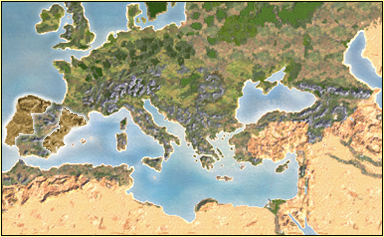
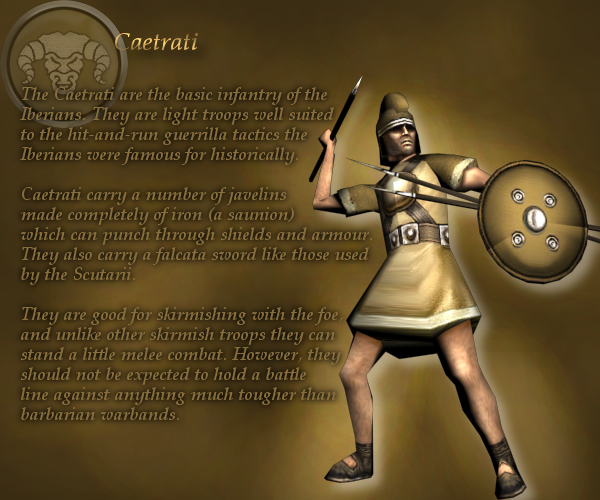
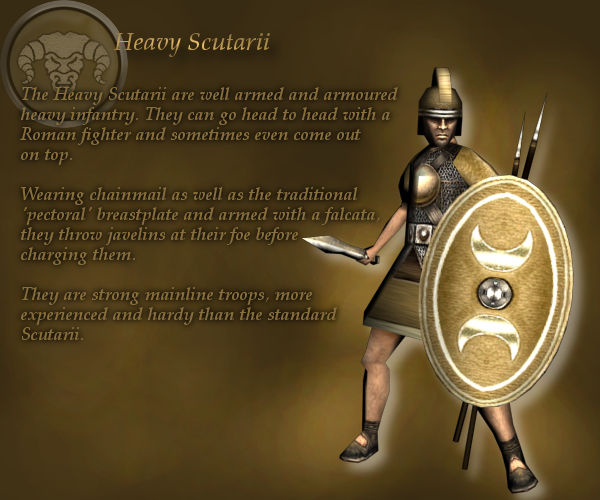

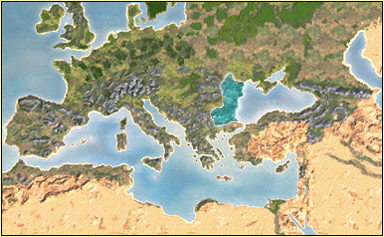

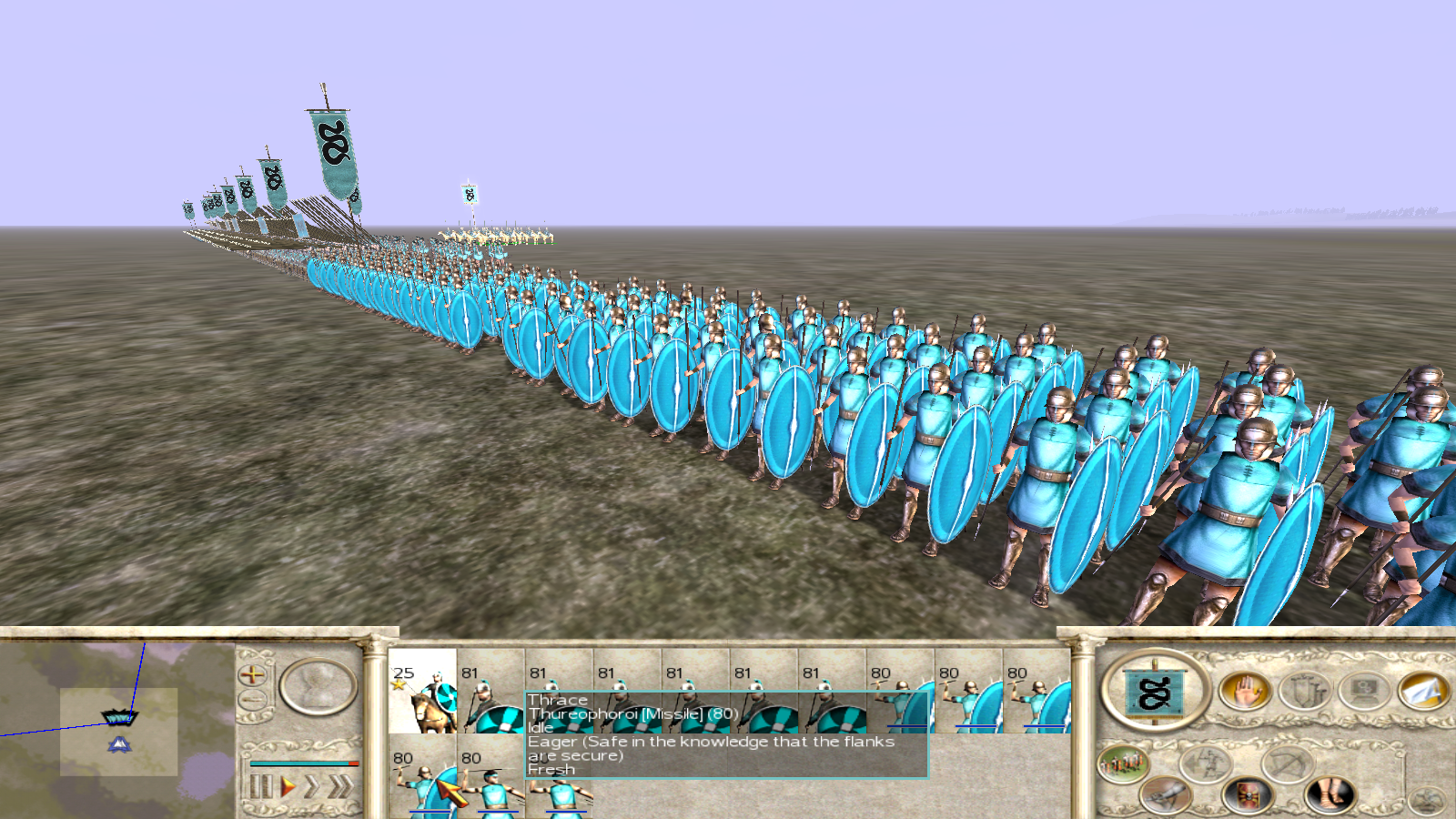
 ). They fill a similar role to Macedon's light lancers, albeit with a weaker charge. Their shields make up for that difference though.
). They fill a similar role to Macedon's light lancers, albeit with a weaker charge. Their shields make up for that difference though.